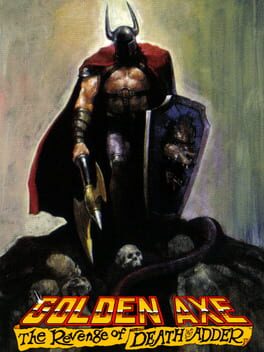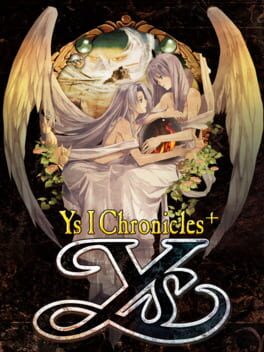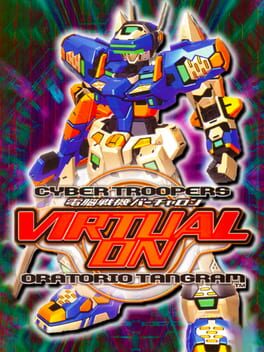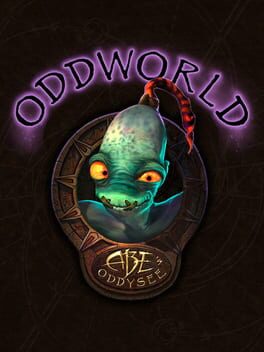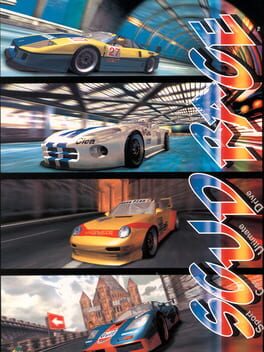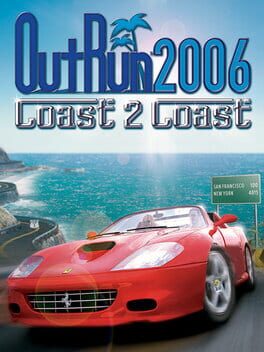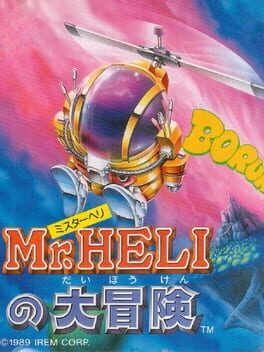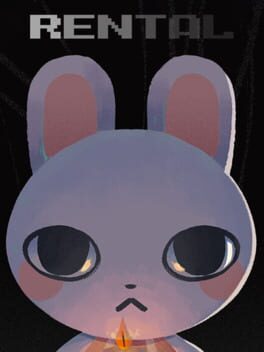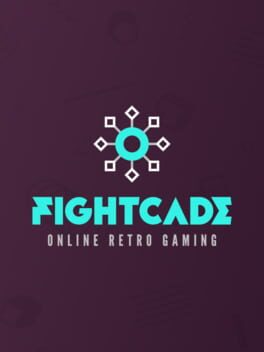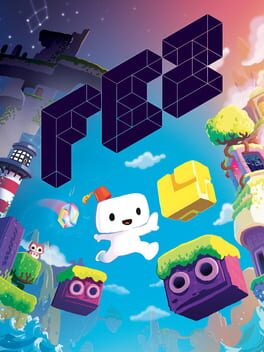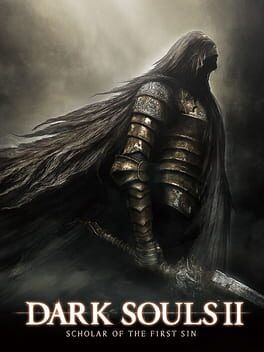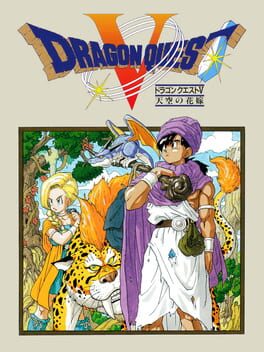5932 Reviews liked by MobileSpider
Ys I Chronicles+
2013
Fruitless back-and-forths over Tomb Raider often put me in the same headspace: thinkin' about Oddworld. Now there's a solid cinematic platformer for the PlayStation 1, one with expressive characters, imaginative environments, a great sense of humor and actual messaging to compliment it's fun and often challenging puzzles. Lara can't like, mind control a bear and make it explode. I rest my case.
But opening up my copy of Abe's Oddysee immediately presents something bleakly funny: the definition of a quintology. Oh Lorne. Poor Lorne. They screwed the man at every turn. From pressing the first run of discs with a repeatable, game breaking bug (in Lorne's words, the person who made this call was not "a Gamer"), to Gamestop publishing a guide that immediately funneled new players into the most difficult hidden screens of the game, to his regrets over Exoddus and Sony throwing Soulstorm up on PS+ to die... Like Xenosaga and Shenmue, it doesn't matter if you have a story to tell or the creativity and temerity to do it, the games industry will chew you up and spit you out like some form of tangy meat popsicle. New n' tasty indeed.
Listen to Lorne Lanning talk about Oddworld for any length of time, and it becomes quickly apparent just how passionate and creatively driven he is. Ars Technica's extended War Stories interview is something I throw on at least once a year because I find his background to be fascinating, and his recollections on navigating creative and industrial fields leading to the formation of his studio, Oddworld Inhabitants, provides a considerable amount of insight as to how his worldview - and consequentially, the themes of Oddworld - formed.
Abe's Oddysee was always intended to have a message, and so gameplay was appropriately designed around the particular anxieties and beliefs Lorne wished to express. As funny as it would be to find Abe strapped, you don't shoot guns, something that was a point of contention with staff at Oddworld Inhabitants. Instead, you "shoot words" (and farts) through gamespeak, a mechanic that allows the player to interface on a more personal level with the game than simply pulling a trigger... Though through mind control, you do still do that. Sometimes the creative process demands compromise.
One complaint I would have about this system is that much of your time rescuing Modokons is front and backloaded, with an extremely lengthy middle game chronicling Abe's trials outside of Rupture Farms tucking most Modokon rescues behind hidden screens and portals. To a certain extent, loading the game so full of secrets is good and provides replayability, but I found the puzzles in which you're trying to disarm a hazardous area and lead as many Modokons to safety as possible to be more engaging than the segmented puzzle rooms of Paramonia and Scrabania. Elum, Abe's mount, does fill this role somewhat, but I twice had him despawn requiring me to reload a save and lose progress, so I'm a little upset with him right now.
The end game also gets absolutely brutal, placing checkpoints far and between sequences that require precise timing and manipulation of enemies. Controls are rarely the issue so much as understanding the order of operations to get through the multiple levels of Rupture Farms, but when everything clicks and you execute on a perfect run, it feels good. The end of Abe's Oddysee has some of the most genuinely tense moment-to-moment gameplay on the system, it is agonizing as it is great. Wait, what do you mean I didn't save enough Modokons? Hold on, why am I being teleported back to the start of Rupture Farms, wait--
While the experience of playing Oddysee can at times be a bit uneven and even frustrating, I do think it comes together into something really special. The texture of the pre-rendered environments, the clay-like quality of the character sprites, the ways in which Rupture's oppressive and hostile factory gives way to barren wastelands drained of resources and life all for the sake of capital, and how that is conveyed humorously both through the game's writing and the player's own machinations... it's great. I really like Abe's Oddysee. 3.5 out of 5 smooches on the cheek for Mr. Lanning, but not 5 because Lorne is apparently never allowed to have a quintology of anything. I don't make the rules.
But opening up my copy of Abe's Oddysee immediately presents something bleakly funny: the definition of a quintology. Oh Lorne. Poor Lorne. They screwed the man at every turn. From pressing the first run of discs with a repeatable, game breaking bug (in Lorne's words, the person who made this call was not "a Gamer"), to Gamestop publishing a guide that immediately funneled new players into the most difficult hidden screens of the game, to his regrets over Exoddus and Sony throwing Soulstorm up on PS+ to die... Like Xenosaga and Shenmue, it doesn't matter if you have a story to tell or the creativity and temerity to do it, the games industry will chew you up and spit you out like some form of tangy meat popsicle. New n' tasty indeed.
Listen to Lorne Lanning talk about Oddworld for any length of time, and it becomes quickly apparent just how passionate and creatively driven he is. Ars Technica's extended War Stories interview is something I throw on at least once a year because I find his background to be fascinating, and his recollections on navigating creative and industrial fields leading to the formation of his studio, Oddworld Inhabitants, provides a considerable amount of insight as to how his worldview - and consequentially, the themes of Oddworld - formed.
Abe's Oddysee was always intended to have a message, and so gameplay was appropriately designed around the particular anxieties and beliefs Lorne wished to express. As funny as it would be to find Abe strapped, you don't shoot guns, something that was a point of contention with staff at Oddworld Inhabitants. Instead, you "shoot words" (and farts) through gamespeak, a mechanic that allows the player to interface on a more personal level with the game than simply pulling a trigger... Though through mind control, you do still do that. Sometimes the creative process demands compromise.
One complaint I would have about this system is that much of your time rescuing Modokons is front and backloaded, with an extremely lengthy middle game chronicling Abe's trials outside of Rupture Farms tucking most Modokon rescues behind hidden screens and portals. To a certain extent, loading the game so full of secrets is good and provides replayability, but I found the puzzles in which you're trying to disarm a hazardous area and lead as many Modokons to safety as possible to be more engaging than the segmented puzzle rooms of Paramonia and Scrabania. Elum, Abe's mount, does fill this role somewhat, but I twice had him despawn requiring me to reload a save and lose progress, so I'm a little upset with him right now.
The end game also gets absolutely brutal, placing checkpoints far and between sequences that require precise timing and manipulation of enemies. Controls are rarely the issue so much as understanding the order of operations to get through the multiple levels of Rupture Farms, but when everything clicks and you execute on a perfect run, it feels good. The end of Abe's Oddysee has some of the most genuinely tense moment-to-moment gameplay on the system, it is agonizing as it is great. Wait, what do you mean I didn't save enough Modokons? Hold on, why am I being teleported back to the start of Rupture Farms, wait--
While the experience of playing Oddysee can at times be a bit uneven and even frustrating, I do think it comes together into something really special. The texture of the pre-rendered environments, the clay-like quality of the character sprites, the ways in which Rupture's oppressive and hostile factory gives way to barren wastelands drained of resources and life all for the sake of capital, and how that is conveyed humorously both through the game's writing and the player's own machinations... it's great. I really like Abe's Oddysee. 3.5 out of 5 smooches on the cheek for Mr. Lanning, but not 5 because Lorne is apparently never allowed to have a quintology of anything. I don't make the rules.
SCUD Race
1997
Mr. Heli
1987
Messy. Feels like a mix between Twinbee and Fantasy Zone, but not as good as either and with the difficulty turned up considerably. A massive difficulty spike with the second boss can give a bad impression, but I wouldn't say its worth continuing after that point anyway. Not awful by any means, but there's not much reason to give this much attention these days.
KinitoPet
2024
I played this for a project I'm working on with some friends and wooooow this is noooot for me lmao.
Analog Horror type beats have never particularly been my thing but I can vibe with a kinda "x but it's off and kinda creepy" type experience especially if it eases you into that experience after instilling a false sense of security with you.
The problem here is that it kinda just goes down the list of the most obvious creepypasta tropes that you could possibly go for from the word go, like you would think that maybe it would hold off on some of its more creepypasta ass shit for at least a little bit but nah, I feel like it's designed that way to keep a youtube/twitch audience engaged (and I mean it has a streamer mode so I definitely think that's what's up).
It especially feels bizarre when the 3rd act of the game actually feels like it does something far creepier and far more interesting with its concept and the kinda connection and trust we allow programs to have on our computers without fully really thinking much about it sometimes.
It just all feels squandered in the way its all wrapped up and presented. Like if this leaned far more into stuff like the complete access/building you something from that, I really think this could've been something way more interesting than it was but I feel the ARG/Youtuber/Streamer/Game Theorist bait it lays out constantly just had me rolling my eyes the entire time.
Defo for a certain audience and hey more power to them but like I need a little more from something like this. I will say, the visual design and audio design though is perfectly done and I do really think that this person has a lot of potential to make something really special.
Also Kinito asked me what my favorite game was, I said Koudelka and he pulled up Control so frankly he's a fraud.
Analog Horror type beats have never particularly been my thing but I can vibe with a kinda "x but it's off and kinda creepy" type experience especially if it eases you into that experience after instilling a false sense of security with you.
The problem here is that it kinda just goes down the list of the most obvious creepypasta tropes that you could possibly go for from the word go, like you would think that maybe it would hold off on some of its more creepypasta ass shit for at least a little bit but nah, I feel like it's designed that way to keep a youtube/twitch audience engaged (and I mean it has a streamer mode so I definitely think that's what's up).
It especially feels bizarre when the 3rd act of the game actually feels like it does something far creepier and far more interesting with its concept and the kinda connection and trust we allow programs to have on our computers without fully really thinking much about it sometimes.
It just all feels squandered in the way its all wrapped up and presented. Like if this leaned far more into stuff like the complete access/building you something from that, I really think this could've been something way more interesting than it was but I feel the ARG/Youtuber/Streamer/Game Theorist bait it lays out constantly just had me rolling my eyes the entire time.
Defo for a certain audience and hey more power to them but like I need a little more from something like this. I will say, the visual design and audio design though is perfectly done and I do really think that this person has a lot of potential to make something really special.
Also Kinito asked me what my favorite game was, I said Koudelka and he pulled up Control so frankly he's a fraud.
Rental
2022
Visually pretty, short little game jam project. Like most of it's kind, Rental is a little rough around the edges but the idea and presentation is strong, I kind of wish it was a full game- or at least extended somewhat with more structure- but that's how these event games usually tend to go. But otherwise, its pretty cute (and free), a perfectly harmless way to kill a few minutes.
FightCade
2015
Fez
2012
If I were to take FEZ at face value, then my thoughts would be pretty brief: it’s a damn good puzzle-platformer game with a hella strong core, taking a 2D interconnected world and twisting it and turning it to achieve greater heights. It’s never particularly difficult or challenging, but it’s fun; reaching new areas is intriguing, and getting the cubes is ultra satisfying, and in a way, I’m kinda glad it never tries to have really hard sections or some sort of final challenge, because even tho I’m sure that’d be cool, and I would really love to see this dimension-shifting mechanic taken up a notch, I also think the way that it is makes the world feel much more organic than it otherwise would, and sells the idea that this is an experience more about the act of exploring than traversing perilous sections.
However, taking FEZ at face value is impossible, or at least it is for me. FEZ is the jumps and beautiful sounds and sights of its adorable ruined worlds as much as it is the secrets that lie within.
I have talked about my fascination with the ancient world and the mysticism and desire to learn that comes with simply witnessing it, whether it is the remnants of a bygone civilization or the remains of an animal that walked the earth hundreds of millions of nights ago. FEZ has a ton of the former and not much of the latter, but what it shares with both of those is that feeling.
The feeling of stumbling upon something you shouldn’t even be able to understand, of seeing the carvings in the wall and the very code that holds reality together and finding answers behind it—it’s satisfying to beat a platforming challenge and get to a chest with a key in it, but it’s equally, if not even more fulfilling, to fit pieces of the puzzle hidden yet in plain sight.
Spirals of purple marble endlessly repeating, secrets to be revealed by feathered friends or written outside of the game itself, tongues that can be completely translated, and moments like what happened to me where I solved a puzzle by complete chance by just fucking around moving some blocks; connecting the deepest secrets of the world through the addition of the Anti-Cubes alone was an amazing decision. Even after pulling apart layers on top of layers to get some of them, I still feel I’ve barely scratched the surface of what’s in here, what can be found, like an excavation that just has begun.
Every step is a new discovery, and making it to each of the main hub worlds opens a new horizon, from the oldest depths to the stormiest peaks, and it’s all so… tranquil. The wonderful, beautiful pixel art mixed with the outstanding OST, it compels you to keep going, to see juuuuuuuuuuuuuuuust a lil’ more, to keep going a bit further, only to be met with a teleporter, going back to the hub, and repeating that process over and over again. It says a lot when, in the year 2024, a game that uses QR codes or 4th wall breaks to solve puzzles doesn’t make me groan; on the contrary, in fact, it manages to fit into that secret uncovering process tremendously well.
There are pieces that don’t quite fit: the fact that quite a few of those more hidden puzzles end up being a combination of LT and LR inputs is a bit disappointing and misses the mark on what other Anit-Cube quests accomplish so well, and there’s some even weirder stuff like annoying void squares that appear randomly and aren’t anything more than a dumb annoyance or how entering doors may just crash to desktop randomly, which isn’t part of the experience, mind you, and it takes you completely out of it sometimes. It only happened once to me, but this being a problem present years later is a bit disappointing, to be honest.
It's a cube quest that a few times can be a little disappointing or frustrating, but that’s something I can easily look past when the rest of it is so stellar that the act of opening doors is the most exciting fucking thing ever. It invites to wonder and imagine, and there’s so much to be solved and found that, after hitting credits, I feel like the exploration can go even further… Oh, and also, Gomez’s design and name is the best fucking thing ever and there’s no contest, the most basic-ass lil white dude and I love it, look at his smile!
Adventure is out there, and it carries mysteries with it, it’s about time someone solves them.
However, taking FEZ at face value is impossible, or at least it is for me. FEZ is the jumps and beautiful sounds and sights of its adorable ruined worlds as much as it is the secrets that lie within.
I have talked about my fascination with the ancient world and the mysticism and desire to learn that comes with simply witnessing it, whether it is the remnants of a bygone civilization or the remains of an animal that walked the earth hundreds of millions of nights ago. FEZ has a ton of the former and not much of the latter, but what it shares with both of those is that feeling.
The feeling of stumbling upon something you shouldn’t even be able to understand, of seeing the carvings in the wall and the very code that holds reality together and finding answers behind it—it’s satisfying to beat a platforming challenge and get to a chest with a key in it, but it’s equally, if not even more fulfilling, to fit pieces of the puzzle hidden yet in plain sight.
Spirals of purple marble endlessly repeating, secrets to be revealed by feathered friends or written outside of the game itself, tongues that can be completely translated, and moments like what happened to me where I solved a puzzle by complete chance by just fucking around moving some blocks; connecting the deepest secrets of the world through the addition of the Anti-Cubes alone was an amazing decision. Even after pulling apart layers on top of layers to get some of them, I still feel I’ve barely scratched the surface of what’s in here, what can be found, like an excavation that just has begun.
Every step is a new discovery, and making it to each of the main hub worlds opens a new horizon, from the oldest depths to the stormiest peaks, and it’s all so… tranquil. The wonderful, beautiful pixel art mixed with the outstanding OST, it compels you to keep going, to see juuuuuuuuuuuuuuuust a lil’ more, to keep going a bit further, only to be met with a teleporter, going back to the hub, and repeating that process over and over again. It says a lot when, in the year 2024, a game that uses QR codes or 4th wall breaks to solve puzzles doesn’t make me groan; on the contrary, in fact, it manages to fit into that secret uncovering process tremendously well.
There are pieces that don’t quite fit: the fact that quite a few of those more hidden puzzles end up being a combination of LT and LR inputs is a bit disappointing and misses the mark on what other Anit-Cube quests accomplish so well, and there’s some even weirder stuff like annoying void squares that appear randomly and aren’t anything more than a dumb annoyance or how entering doors may just crash to desktop randomly, which isn’t part of the experience, mind you, and it takes you completely out of it sometimes. It only happened once to me, but this being a problem present years later is a bit disappointing, to be honest.
It's a cube quest that a few times can be a little disappointing or frustrating, but that’s something I can easily look past when the rest of it is so stellar that the act of opening doors is the most exciting fucking thing ever. It invites to wonder and imagine, and there’s so much to be solved and found that, after hitting credits, I feel like the exploration can go even further… Oh, and also, Gomez’s design and name is the best fucking thing ever and there’s no contest, the most basic-ass lil white dude and I love it, look at his smile!
Adventure is out there, and it carries mysteries with it, it’s about time someone solves them.
I'm probably going to repeat a lot of similar points that Larry Davis brought up in his review, so... what he said.
14 years after The Forgotten Sands, Prince of Persia is finally back, and the folks over at Ubisoft Monpellier understood the assignment: crap up good movement and puzzle solving with dreadful combat and an over-reliance on mobs of spongy enemies.
Parrying and punishing is the bread and butter of Sargon's kit, a rhythm you want to maintain to build meter for more devastating abilities, but when you're just trying to get to your next objective or explore some crypt, constantly getting beaned from all sides by low-level goons that have a bafflingly high HP pool gets really annoying. You might think bosses better leverage this system being that they're one-on-one encounters, but most fall into the same rote strategy of playing defensively until they open themselves up for a cinematic counter.
At least one of these bosses actively punishes dynamic play by spamming teleports and parries when the player behaves aggressively, resulting in a fight that requires you sit Sargon in a corner so the boss will fall into a pattern of throwing out the same three attacks, permitting you to plink away at his health at the end of each sequence. I'm pretty sure this isn't an intentional lesson so much as the AI doesn't know how to deal with you remaining still, but I would describe combat as being bizarrely passive despite how much you're given to work with.
The pendulum does eventually swing in the other direction when you gather up enough ingots to upgrade Sargon's weapons, but enemies never quite keep pace with the player's growth, resulting in a game that's entirely too frustrating in the early half and almost comically easy in the second.
And sure, you might argue that a search-action game is all about making the player feel progressively more empowered as they plumb the depths of whatever hostile labyrinth they're trapped in, but almost all the gains Sargon actually makes are bought and paid for with time crystals. In Super Metroid, Samus slowly gains abilities and expands her inventory through exploration. In Symphony of the Night, Alucard can find a variety of capes, armors, and weapons that allows the player to directly build their character. While The Lost Crown's most secluded areas occasionally house a heart container or equipable charm (most of which are borderline useless), they'll more often dead end with 40 crystals and a piece of paper with a full length Backloggd essay written on it -- I ain't reading that, I don't have time! Growth feels far more tied to the economics of the world and what you can afford than it does exploration. Hell, sometimes you'll even go out of your way to reach a secret alcove and find there's nothing at all.
Before I punch out from my shift at the hot take factory, where I work as a foreman to support my factory wife and my 2.5 factory kids, I will say that Lost Crown is a much more enjoyable experience when you decouple yourself from the typical search-action loop of exploring every nook and cranny and instead focus on the main path. There's some genuinely great platforming sequences and puzzles that make good use of Sargon's traversal abilities, and the layout of Mount Qaf is easy to read and navigate your way through thanks to the game setting objective markers and allowing you to photograph areas of interest for quick reference on the map.
The story has its share of contrivances, especially early on, but I did find myself surprisingly invested by the end of the game, and although most characters can be described as "well-meaning but criminally and suicidally stupid," the concept of Mount Qaf existing within a bubble of fractured space and time is enough to carry the narrative whenever the character writing falls short. I really like the idea that every character and NPC is perceiving time differently, some being displaced by decades whereas others are made to exist within a singular moment for eternity.
Lost Crown doesn't stick the landing for me. It gets a lot about the search-action formula wrong, particularly with character growth and incentivizing exploration off the beaten path. The combat is rough and excessive, and sometimes you'll spend ten minutes throwing yourself to a meat grinder trial-and-erroring your way through pattern memorization all for a pair of pants, but there's still something here. Traversal feels good, the visual design is great, and the core loop is satisfying enough to elevate Lost Crown from being a bad game to being perfectly mediocre, maybe even serviceable. In other words, it's a Prince of Persia game.
Gonna buy a shirt that says "I'd rather be playing Touhou Luna Nights."
14 years after The Forgotten Sands, Prince of Persia is finally back, and the folks over at Ubisoft Monpellier understood the assignment: crap up good movement and puzzle solving with dreadful combat and an over-reliance on mobs of spongy enemies.
Parrying and punishing is the bread and butter of Sargon's kit, a rhythm you want to maintain to build meter for more devastating abilities, but when you're just trying to get to your next objective or explore some crypt, constantly getting beaned from all sides by low-level goons that have a bafflingly high HP pool gets really annoying. You might think bosses better leverage this system being that they're one-on-one encounters, but most fall into the same rote strategy of playing defensively until they open themselves up for a cinematic counter.
At least one of these bosses actively punishes dynamic play by spamming teleports and parries when the player behaves aggressively, resulting in a fight that requires you sit Sargon in a corner so the boss will fall into a pattern of throwing out the same three attacks, permitting you to plink away at his health at the end of each sequence. I'm pretty sure this isn't an intentional lesson so much as the AI doesn't know how to deal with you remaining still, but I would describe combat as being bizarrely passive despite how much you're given to work with.
The pendulum does eventually swing in the other direction when you gather up enough ingots to upgrade Sargon's weapons, but enemies never quite keep pace with the player's growth, resulting in a game that's entirely too frustrating in the early half and almost comically easy in the second.
And sure, you might argue that a search-action game is all about making the player feel progressively more empowered as they plumb the depths of whatever hostile labyrinth they're trapped in, but almost all the gains Sargon actually makes are bought and paid for with time crystals. In Super Metroid, Samus slowly gains abilities and expands her inventory through exploration. In Symphony of the Night, Alucard can find a variety of capes, armors, and weapons that allows the player to directly build their character. While The Lost Crown's most secluded areas occasionally house a heart container or equipable charm (most of which are borderline useless), they'll more often dead end with 40 crystals and a piece of paper with a full length Backloggd essay written on it -- I ain't reading that, I don't have time! Growth feels far more tied to the economics of the world and what you can afford than it does exploration. Hell, sometimes you'll even go out of your way to reach a secret alcove and find there's nothing at all.
Before I punch out from my shift at the hot take factory, where I work as a foreman to support my factory wife and my 2.5 factory kids, I will say that Lost Crown is a much more enjoyable experience when you decouple yourself from the typical search-action loop of exploring every nook and cranny and instead focus on the main path. There's some genuinely great platforming sequences and puzzles that make good use of Sargon's traversal abilities, and the layout of Mount Qaf is easy to read and navigate your way through thanks to the game setting objective markers and allowing you to photograph areas of interest for quick reference on the map.
The story has its share of contrivances, especially early on, but I did find myself surprisingly invested by the end of the game, and although most characters can be described as "well-meaning but criminally and suicidally stupid," the concept of Mount Qaf existing within a bubble of fractured space and time is enough to carry the narrative whenever the character writing falls short. I really like the idea that every character and NPC is perceiving time differently, some being displaced by decades whereas others are made to exist within a singular moment for eternity.
Lost Crown doesn't stick the landing for me. It gets a lot about the search-action formula wrong, particularly with character growth and incentivizing exploration off the beaten path. The combat is rough and excessive, and sometimes you'll spend ten minutes throwing yourself to a meat grinder trial-and-erroring your way through pattern memorization all for a pair of pants, but there's still something here. Traversal feels good, the visual design is great, and the core loop is satisfying enough to elevate Lost Crown from being a bad game to being perfectly mediocre, maybe even serviceable. In other words, it's a Prince of Persia game.
Gonna buy a shirt that says "I'd rather be playing Touhou Luna Nights."
There was a brief period where I was ready to jump on the 'Dark Souls 2 is underrated' train but then it just continued to hit me with underwhelming boss after underwhelming boss. I understand some fans prefer when the series leans harder into the RPG side of 'Action-RPG' but I'm really just here for the action and while some fights/areas delivered on this fairly well, a majority of them can be brute forced far too easily simply by having enough levels under your belt.
On a more positive note, the atmosphere here is unique and interesting, there's a pretty diverse range of locations (especially when including the DLC), and the NPCs are some of the most memorable in the series. I also actually enjoyed a majority of the additional enemies that were thrown into SotFS to make things a little more difficult; I don't want to imagine how bland some of these areas would've been without them.
At the end of the day, a souls game is a souls game and I had a good enough time working my way through Dark Souls 2 but this is easily the least impressed I've been with any entry in the series. (Insert joke about how DS2 is just an Elden Ring prototype here)
On a more positive note, the atmosphere here is unique and interesting, there's a pretty diverse range of locations (especially when including the DLC), and the NPCs are some of the most memorable in the series. I also actually enjoyed a majority of the additional enemies that were thrown into SotFS to make things a little more difficult; I don't want to imagine how bland some of these areas would've been without them.
At the end of the day, a souls game is a souls game and I had a good enough time working my way through Dark Souls 2 but this is easily the least impressed I've been with any entry in the series. (Insert joke about how DS2 is just an Elden Ring prototype here)
I wasn’t intending on making a review for this game but I decided to change my mind and give this one a nice review. I’ve always been terrible at trying to just finish these DQ games despite XI being such a great game. I decided to play the fifth entry because I know how popular it was though had I done this later, I probably would have done II instead. Regardless, let me tell you why DQ V is such a great game.
While this game is old, I don’t really want to spoil much of the story as I think it’s something that should be experienced if you have an interest in the game. The story however did surprise me, I was expecting it to be pretty basic and would work for the most part of the time. There’s so many eye opening moments and even times that got a big reaction out of me. While I don’t find the characters as memorable as other RPGs, a lot of them are still good for the game and I’m happy to find the writing to be one of the highlights of the game. There’s even some nice humor at times. It’s just overall very good.
The gameplay is also pretty fun and rarely has dull moments. One neat mechanic of DQ V has to be recruiting specific monsters from the overworld or dungeons to put on your team. I used a few of them and I’d say my favorite one was the Curer just to have a convenient healall user if I needed it. Battles require some thought and you’ll have to make use of buffs, debuffs, and statuses to win some later fights. You don’t even need to grind all that much in the game, I only did it like a few times though it might vary for others. I love all the different types of spells to use too but it does make it stressful to sometimes not go overboard and run out. If there was one thing I regret was not buying more Elven magic from the casino. I did at least prepare for the last part of the game.
The world is vast in the game and there’s a lot of places to visit and discover. One thing I love about the overworld is just the many ways to travel in it. You can go on foot, travel by ship, magic carpet, a floating castle, and even a dragon. I did find myself getting lost a few times but I did get used to it for the most part. I wish the return spell would let you travel to any location you’ve been to, it seems to be picky about where it’ll save locations for you. While the game visually might be a little repetitive for some of the locations, there’s still a lot here and it was always a curiosity to check what’s new.
The dungeon design in this game is pretty good and not much of it is that annoying or bad. It’s fun to explore these and get items and fight tough enemies. I do wish more bosses were in them though, it feels like a lot of the time you don’t fight them. There’s some memorable places like the haunted location early in the game, a cave with minecarts to ride, and a volcano with lava floors that hurt. Wait, Final Fantasy 1 already did that last one, hmm. You also sometimes can’t bring your caravan in for these places so make sure you set out a good team for this before going in. I swear a lot of the 2nd half makes you do this.
Ok I know I said to let you experience the story for yourself but one thing that was on my mind a few times was the marriage thing. You’ll try to get an item related to your quest but are forced to marry a girl by the name of Flora. By the time you’re almost done, you meet up with Bianca as she’s aged up since you last met her in your childhood years. Now I for one thought it was very obvious where they were going with this and I was expecting them to truly fall in love. When you finally get the rings, you get this plot point where the Hero struggles between the two with even a restless night and I’m just thinking “What? Why would I not choose Bianca?” I almost felt like this was just gonna force her anyway but obviously I was going to pick her. It wasn’t till later I looked it up and found out you can marry her! With some of the parts in the story, that just feels wrong. Maybe I just don’t get it? Just feels like the wrong choice to me.
There are some small nitpicks I have with the game. I really don’t like the item management with this game and how picky it is with them wanting items in a character’s inventory to use. I also felt the encounter rate at times could be a little annoying at times. This point I’m gonna bring up isn’t a problem with the game but I felt by the 2nd half, my team basically stayed the same and I felt kind of discouraged to try other ideas because what I had was working fine. There’s also some characters you can use and I find confusing why you would want to unless I’m missing something. I think it’s partially why a lot of the characters don’t feel the most memorable in my heart if that makes sense. Still, again these are nitpicks and it says a lot about the game that these are really some of my only few negatives.
Visually the game looks pretty nice for a 1992 RPG. I think the battle screens are the highlight because they actually take place in locations just like the first DQ game on Famicom. Those designs by Akira Toriyama are also just splendid here. The music is also pretty good and almost feels like I can hear the orchestra even if it’s obviously still just the SFC sound chip. I especially love the two dungeon themes you hear in the game the most. I also really love the music when you’re sailing. Even the sound effects sound pretty nice for the hardware. It’s all worth a listen if you ever have the time.
I’m happy to have finally finished this game and see it rank so high. Sure it may not be my favorite 16 bit RPG as of writing this but still being such a great game is no slouch either. You probably know already just how popular this game is and it’s very easy to see why now that I’ve played it all the way through. There are various ways to play the game now. It was first remade in 3D on the PS2 and then a more enhanced 2D version was made for the DS. The DS version was the first time it was localized too so you’ll need a fan translation to play the original or the 3D remake. It also has a version for mobile phones. Oddly it’s never been ported since which feels very odd considering the Switch’s success. A movie based on this game also exists called Dragon Quest: Your Story. Never watched it though, maybe I should. The series would only get one more sequel on the system which is kind of shocking considering how well this one did. When I watched the credits of the game, I really felt moved at reminiscing about the journey I had. It’s kind of crazy to think I played this in memory of Toriyama as he has now passed away and seeing his name makes me miss him again. Bless him and all of the talent who worked on this game. Dragon Quest V is a great game and it’s a game I’ll probably play again someday.
While this game is old, I don’t really want to spoil much of the story as I think it’s something that should be experienced if you have an interest in the game. The story however did surprise me, I was expecting it to be pretty basic and would work for the most part of the time. There’s so many eye opening moments and even times that got a big reaction out of me. While I don’t find the characters as memorable as other RPGs, a lot of them are still good for the game and I’m happy to find the writing to be one of the highlights of the game. There’s even some nice humor at times. It’s just overall very good.
The gameplay is also pretty fun and rarely has dull moments. One neat mechanic of DQ V has to be recruiting specific monsters from the overworld or dungeons to put on your team. I used a few of them and I’d say my favorite one was the Curer just to have a convenient healall user if I needed it. Battles require some thought and you’ll have to make use of buffs, debuffs, and statuses to win some later fights. You don’t even need to grind all that much in the game, I only did it like a few times though it might vary for others. I love all the different types of spells to use too but it does make it stressful to sometimes not go overboard and run out. If there was one thing I regret was not buying more Elven magic from the casino. I did at least prepare for the last part of the game.
The world is vast in the game and there’s a lot of places to visit and discover. One thing I love about the overworld is just the many ways to travel in it. You can go on foot, travel by ship, magic carpet, a floating castle, and even a dragon. I did find myself getting lost a few times but I did get used to it for the most part. I wish the return spell would let you travel to any location you’ve been to, it seems to be picky about where it’ll save locations for you. While the game visually might be a little repetitive for some of the locations, there’s still a lot here and it was always a curiosity to check what’s new.
The dungeon design in this game is pretty good and not much of it is that annoying or bad. It’s fun to explore these and get items and fight tough enemies. I do wish more bosses were in them though, it feels like a lot of the time you don’t fight them. There’s some memorable places like the haunted location early in the game, a cave with minecarts to ride, and a volcano with lava floors that hurt. Wait, Final Fantasy 1 already did that last one, hmm. You also sometimes can’t bring your caravan in for these places so make sure you set out a good team for this before going in. I swear a lot of the 2nd half makes you do this.
Ok I know I said to let you experience the story for yourself but one thing that was on my mind a few times was the marriage thing. You’ll try to get an item related to your quest but are forced to marry a girl by the name of Flora. By the time you’re almost done, you meet up with Bianca as she’s aged up since you last met her in your childhood years. Now I for one thought it was very obvious where they were going with this and I was expecting them to truly fall in love. When you finally get the rings, you get this plot point where the Hero struggles between the two with even a restless night and I’m just thinking “What? Why would I not choose Bianca?” I almost felt like this was just gonna force her anyway but obviously I was going to pick her. It wasn’t till later I looked it up and found out you can marry her! With some of the parts in the story, that just feels wrong. Maybe I just don’t get it? Just feels like the wrong choice to me.
There are some small nitpicks I have with the game. I really don’t like the item management with this game and how picky it is with them wanting items in a character’s inventory to use. I also felt the encounter rate at times could be a little annoying at times. This point I’m gonna bring up isn’t a problem with the game but I felt by the 2nd half, my team basically stayed the same and I felt kind of discouraged to try other ideas because what I had was working fine. There’s also some characters you can use and I find confusing why you would want to unless I’m missing something. I think it’s partially why a lot of the characters don’t feel the most memorable in my heart if that makes sense. Still, again these are nitpicks and it says a lot about the game that these are really some of my only few negatives.
Visually the game looks pretty nice for a 1992 RPG. I think the battle screens are the highlight because they actually take place in locations just like the first DQ game on Famicom. Those designs by Akira Toriyama are also just splendid here. The music is also pretty good and almost feels like I can hear the orchestra even if it’s obviously still just the SFC sound chip. I especially love the two dungeon themes you hear in the game the most. I also really love the music when you’re sailing. Even the sound effects sound pretty nice for the hardware. It’s all worth a listen if you ever have the time.
I’m happy to have finally finished this game and see it rank so high. Sure it may not be my favorite 16 bit RPG as of writing this but still being such a great game is no slouch either. You probably know already just how popular this game is and it’s very easy to see why now that I’ve played it all the way through. There are various ways to play the game now. It was first remade in 3D on the PS2 and then a more enhanced 2D version was made for the DS. The DS version was the first time it was localized too so you’ll need a fan translation to play the original or the 3D remake. It also has a version for mobile phones. Oddly it’s never been ported since which feels very odd considering the Switch’s success. A movie based on this game also exists called Dragon Quest: Your Story. Never watched it though, maybe I should. The series would only get one more sequel on the system which is kind of shocking considering how well this one did. When I watched the credits of the game, I really felt moved at reminiscing about the journey I had. It’s kind of crazy to think I played this in memory of Toriyama as he has now passed away and seeing his name makes me miss him again. Bless him and all of the talent who worked on this game. Dragon Quest V is a great game and it’s a game I’ll probably play again someday.
